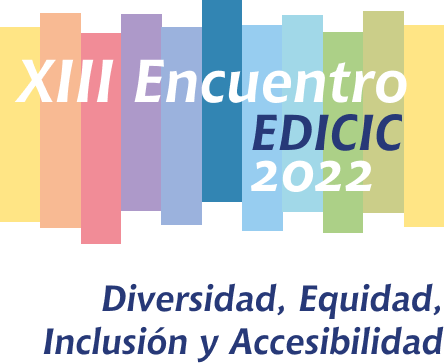Analysis of theses and dissertations on racism: focus on the capes catalog of theses and dissertations
DOI:
https://doi.org/10.62758/re.v2i4.115Keywords:
Bibliometric Analysis, Scientific Communication, RacismAbstract
This research has as its central theme the Thematic Representation of Information (RTI) involving bibliometric studies, specifically scientometrics. The field of application is the academic production of Higher Education Institutions (HEIs) administered by the federal government in the State of Minas Gerais (MG), made available through the Theses and Dissertations Catalog (CTD) of the Coordination for the Improvement of Higher Education Personnel. (CAPES), related to racism in the period of 21 years (2000 to 2020). Thus, the problem proposed here seeks to know which HEIs maintained by the federal government in the State of Minas Gerais produce the most theses and dissertations on the racial issue in Brazil, and the amount of this production over the years from 2000 to 2020. Due to the recent valorization of the racial theme in Brazil as an object of scientific studies and in debates in the media, people of color continue to be the large portion of the population in our country that receives the lowest remuneration, that suffers all kinds of violence and discrimination , in addition to boasting lower socio-educational indices, although in recent years there has been some improvement in these indices, including access to higher education due to affirmative policies aimed at this portion of the Brazilian population (IBGE, 2019). According to Dias & Naves (2007), the treatment of information can have two main aspects, one focusing on the description of physical data and the other more subjective, focused on the content of documents describing the topics covered. Café & Bräscher (2008, pp.54-75) report that description (representation) is fundamental for the organization and retrieval of information. The research is exploratory and descriptive and also bibliographical and documentary, using the bibliometric study of the Minas Gerais academic production of theses and dissertations contained in the CAPES CTD that deals with the subject. The search found 460 documents on the subject. In the state, the institution that most dedicated itself to the subject was UFMG. This research demonstrates that there are many paths to be explored to break with racism in Brazilian society.
References
Almeida, S. (2018). O que é racismo estrutural? Letramento; Justificando.
Araújo, C. A. A. (2006). Bibliometria: evolução histórica e questões atuais. Em Questão, 12(1), pp. 11–32. https://seer.ufrgs.br/index.php/EmQuestao/article/view/16.
Black, K. (2022). Justiça social e biblioteconomia e ciência da informação antirracista. Múltiplos Olhares em Ciência da Informação, n. esp. http://hdl.handle.net/20.500.11959/brapci/197217. DOI: https://doi.org/10.35699/2237-6658.2022.39918
Página Inicial (n.d.). Ministério Da Educação. https://www.gov.br/mec/pt-br.
Café, L. M. A. & Bräscher, M. (2008). Organização da informação e bibliometria. Encontros Bibli: Revista eletrônica De Biblioteconomia E Ciência Da informação, 13(1), 54-75. https://periodicos.ufsc.br/index.php/eb/article/view/1518-2924.2008v13nesp1p54. DOI: https://doi.org/10.5007/1518-2924.2008v13nesp1p54
CAPES (2010). CAPES. https://www.gov.br/capes/pt-br.
Cunha, M. B. & Cavalcanti, C. R. O.(2008). Dicionário de biblioteconomia e arquivologia. Brasília: Briquet de Lemos. pp. xvi, pp. 451. https://repositorio.unb.br/handle/10482/34113.
Dias, E. W. & Naves, M. M. L. (2007). Análise de assunto: teoria e prática. Thesaurus, 2007.
Fujita, M. S. L. (2003). A identificação de conceitos no processo de análise de assunto para indexação. RDBCI: Revista Digital de Biblioteconomia e Ciência da Informação, 1(1), pp. 60–90. https://doi.org/10.20396/rdbci.v1i1.2089. DOI: https://doi.org/10.20396/rdbci.v1i1.2089
Fundação João Pinheiro (FJP) (2020). Estudo temático: caracterizações da população negra. Informativo FJP, 2 (12), 24 novembro de 2020.
Guedes, V. L. S. & Borschiver, S. (2005, junho 14-17). Bibliometria: uma ferramenta estatística para a gestão da informação e do conhecimento, em sistemas de informação, de comunicação e de avaliação científica e tecnológica [Apresentação de trabalho]. 6º Encontro Nacional de Ciência da Informação, Salvador, Bahia. http://www.cinform-anteriores.ufba.br/vi_anais/docs/VaniaLSGuedes.pdf.
Houaiss, A., Villar, M. & Franco, F. M. M. (2001) Dicionário Houaiss da língua portuguesa. Elaborado pelo Instituto Antônio Houaiss de Lexícografia. Objetiva. pp. 732.
Instituto Brasileiro de Geografia e Estatística (2019). Desigualdades sociais por cor ou raça no Brasil.
Kobashi, N. Y. (1994). Elaboração de informações documentárias: em busca de uma metodologia (Tese (Doutorado). Universidade de São Paulo, São Paulo.
Le Coadic, Y. F. (2004). A Ciência da Informação. (2.ed.) Brasília: Briquet de Lemos.
Macias-Chapula, C. A. (1998). O papel da informetria e da cienciometria e sua perspectiva nacional e internacional. Ciência da Informação, 27(2). https://doi.org/10.18225/ci.inf.v27i2.794. DOI: https://doi.org/10.1590/S0100-19651998000200005
Nogueira Filho, O. da C. Racismo (2010). In: Nogueira Filho, O. da C. Vocabulário da política. Brasília: Senado Federal, Unilegis. pp. 355-356.
Oliveira, H. P. C. de & Aquino, M. de A. (2012). O conceito de informação etnicorracial na Ciência da Informação. Liinc Em Revista, 8(2). https://doi.org/10.18617/liinc.v8i2.453 DOI: https://doi.org/10.18225/liinc.v8i2.453
Pinto, V. B., Meunier, J.-G. & Silva Neto, C. (2008). A contribuição peirciana para a representação indexal de imagens visuais. Encontros Bibli: revista eletrônica de Biblioteconomia e Ciência a informação, 13(25), pp. 15-35. https://doi.org/10.5007/1518-2924.2008v13n25p15. DOI: https://doi.org/10.5007/1518-2924.2008v13n25p15
Plataforma Sucupira (2021). Sucupira.capes.gov.br. https://sucupira.capes.gov.br/sucupira/.
Rosas, F. S., Almeida, C. C. & Silva, D. D. (2020). Indicadores de citação. In: Grácio, M. C. C. el al. (Orgs.). Tópicos da bibliometria para bibliotecas universitárias. Marília: Oficina Universitária; São Paulo: Cultural Acadêmica.
Saracevic, T. (2009). Information science. In: Bates, M. J &Maack, M. B. (Eds.) Encyclopedia of Library and Information Science. New York: Taylor & Francis. Disponível em: https://tefkos.comminfo.rutgers.edu/SaracevicInformationScienceELIS2009.pdf.
Silva, D. M. F. da, Valério, E. D. & Carmo, N. L. do (2021). Negra Intelectual na Biblioteconomia do Cariri Cearense: a trajetória de Joselina da Silva. Folha De Rosto, 7(1), 28-47. https://doi.org/10.46902/2021n1p28-47. DOI: https://doi.org/10.46902/2021n1p28-47
Silva, F., Garcez, D. & Silva, R. (2022). Conhecimento das margens: da injustiça epistêmica à valorização do conhecimento negro em Biblioteconomia e Ciência da Informação. Revista ACB, 27(1), pp. 1-19. https://revista.acbsc.org.br/racb/article/view/1885/pdf.
Silva, J. (2003). A união dos homens de cor: aspectos do movimento negro dos anos 40 e 50. Estudos Afro-Asiáticos, 25 (2) pp. 215-235. https://www.scielo.br/j/eaa/a/QSsCvKP5t6Q7gtTqrczkbjr/?lang=pt. DOI: https://doi.org/10.1590/S0101-546X2003000200002
Souza, J. J. F. (2021). Como o racismo criou o Brasil. Estação Brasil.
Vanti, N. A. P. (2002) Da bibliometria à webometria: uma exploração conceitual dos mecanismos utilizados para medir o registro da informação e a difusão do conhecimento. Ciência da Informação, Brasília, 31(2), pp. 152-162. https://www.scielo.br/j/ci/a/SLKfBsNL3XHPPqNn3jmqF3q/abstract/?lang=pt. DOI: https://doi.org/10.1590/S0100-19652002000200016
Downloads
Published
How to Cite
Issue
Section
License
Copyright (c) 2022 Revista EDICIC

This work is licensed under a Creative Commons Attribution 4.0 International License.
The Association holds the copyright of the texts it publishes and, therefore, adopts a Creative Commons License, CC BY 4.0 DEED Attribution 4.0 International (https://creativecommons.org/
You are free to:
- Share: copy and redistribute the material in any medium or format for any purpose, even commercially.
- Adapt: remix, transform, and build upon the material for any purpose, even commercially.






